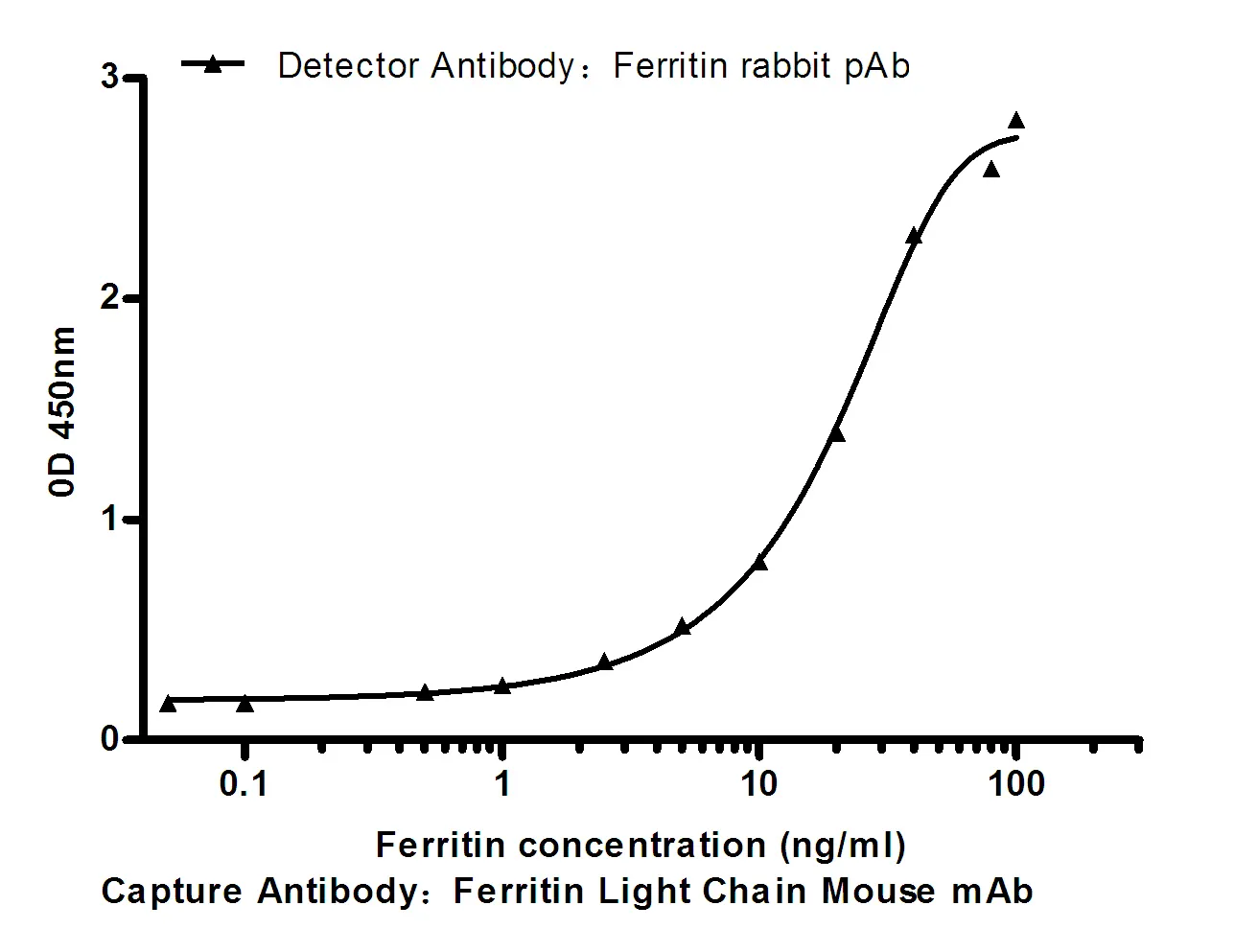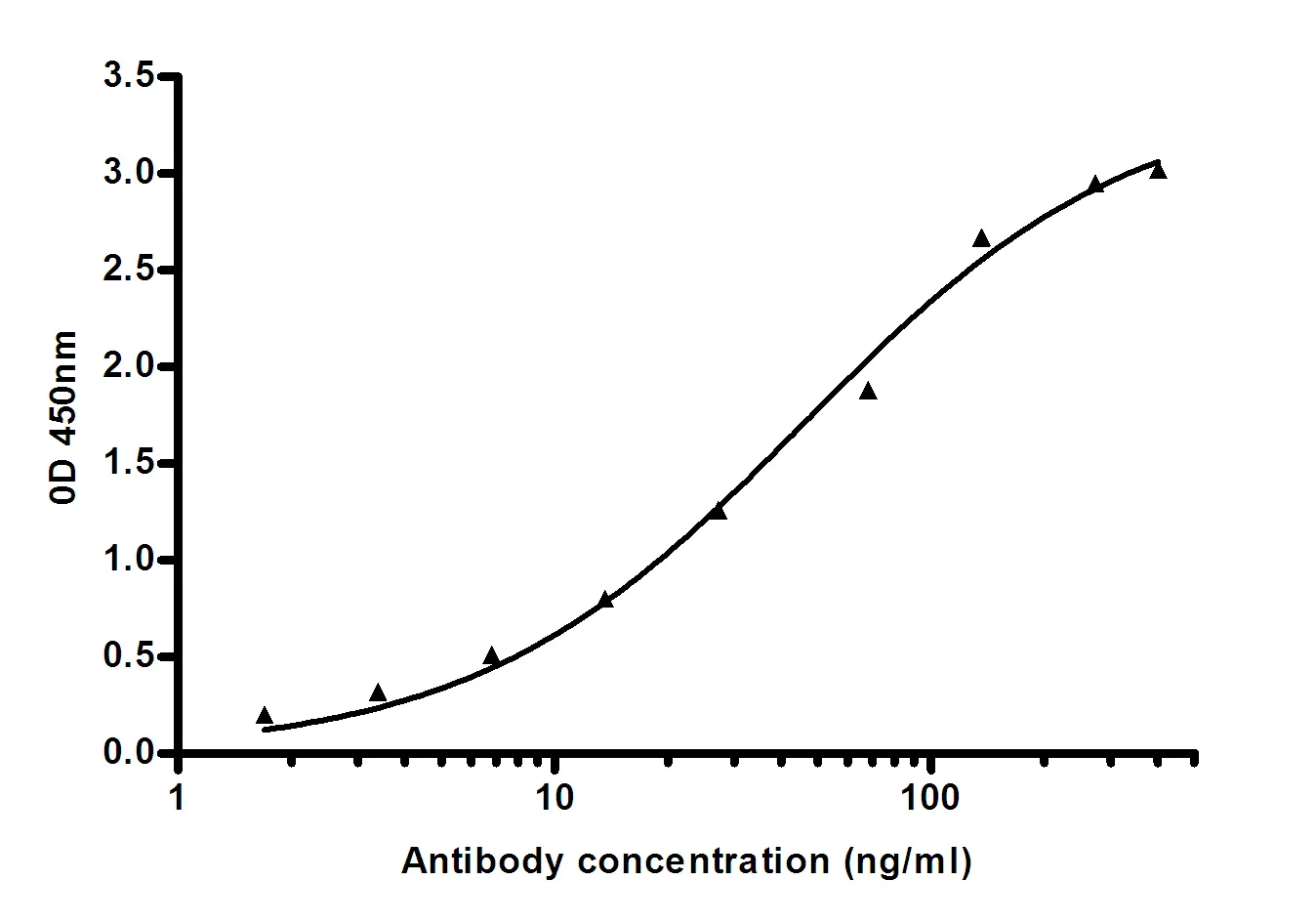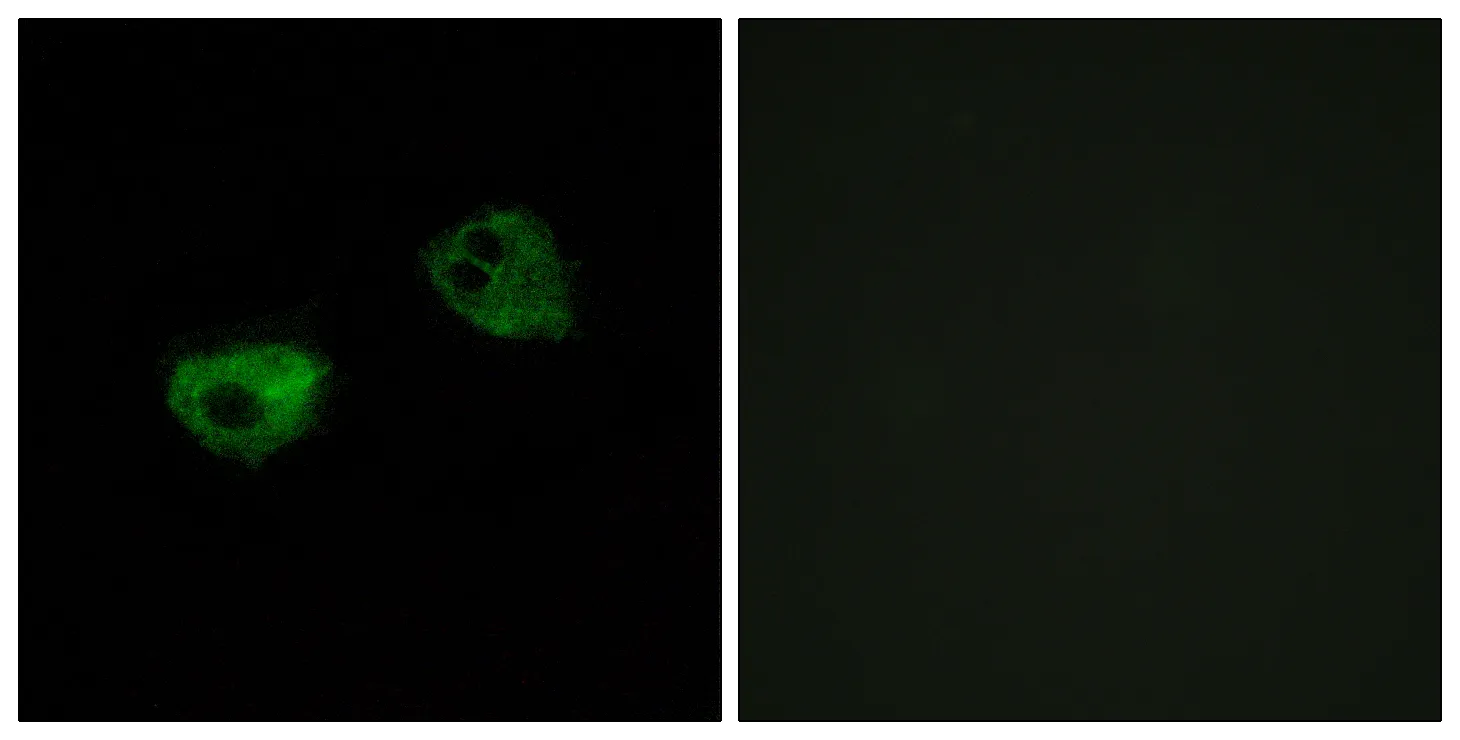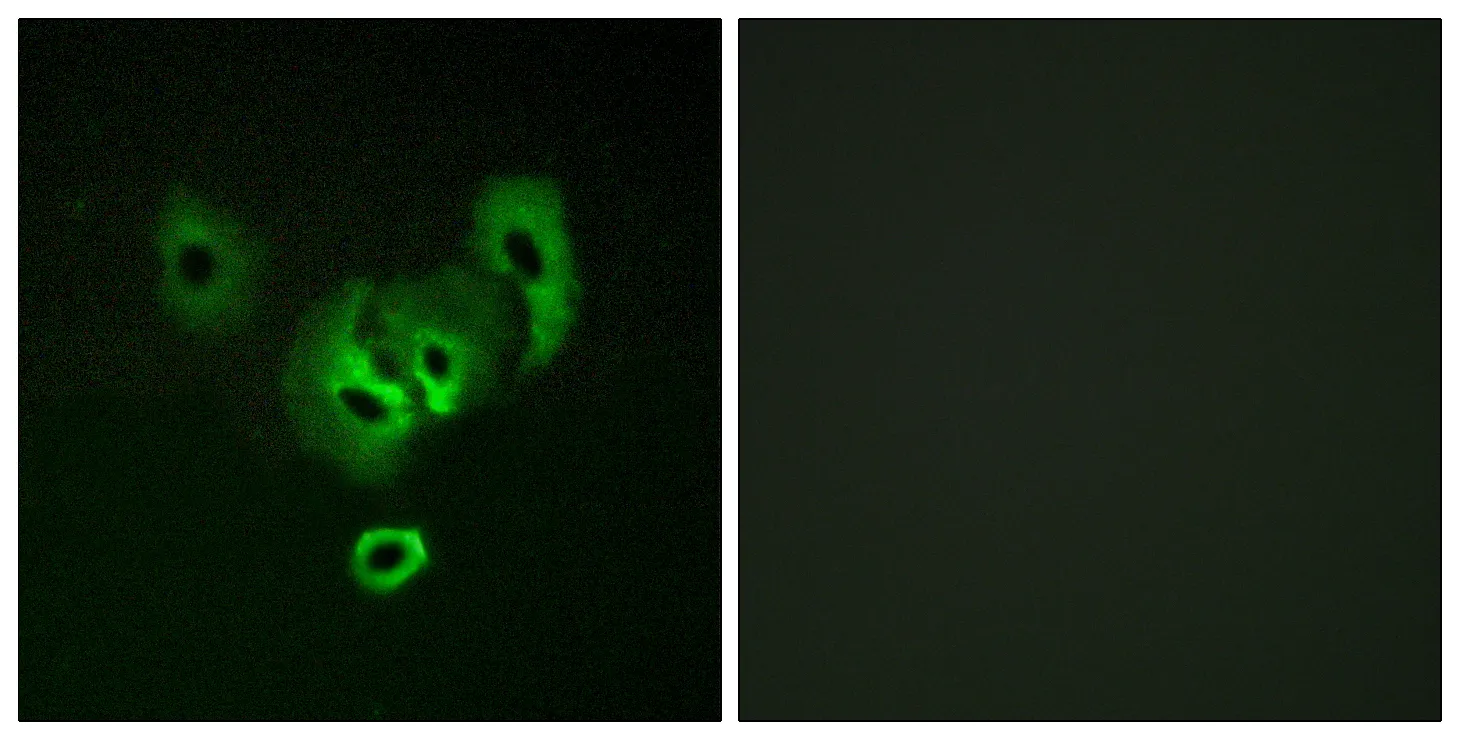Summary
Performance
Immunogen
Application
Background
function:Receptor for relaxin-3. Binding of the ligand inhibit cAMP accumulation.,similarity:Belongs to the G-protein coupled receptor 1 family.,tissue specificity:Expressed predominantly in brain regions. Highest expression in substantia nigra and pituitary, followed by hippocampus, spinal cord, amygdala, caudate nucleus and corpus callosum, quite low level in cerebellum. In peripheral tissues, relatively high levels in adrenal glands, low levels in pancreas, salivary gland, placenta, mammary gland and testis.,function:Receptor for relaxin-3. Binding of the ligand inhibit cAMP accumulation.,similarity:Belongs to the G-protein coupled receptor 1 family.,tissue specificity:Expressed predominantly in brain regions. Highest expression in substantia nigra and pituitary, followed by hippocampus, spinal cord, amygdala, caudate nucleus and corpus callosum, quite low level in cerebellum. In peripheral tissues, relatively high levels in adrenal glands, low levels in pancreas, salivary gland, placenta, mammary gland and testis.,
Research Area




